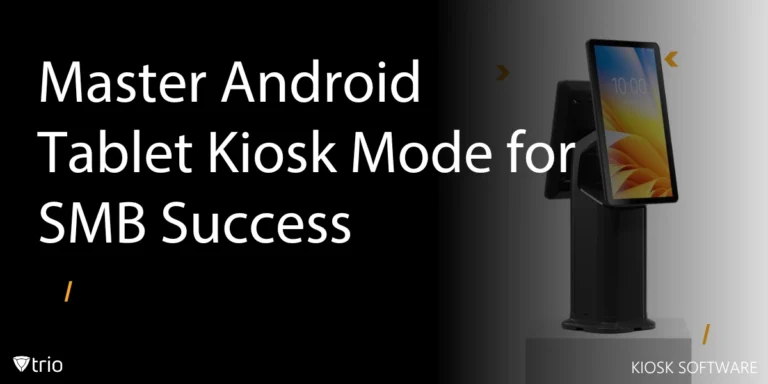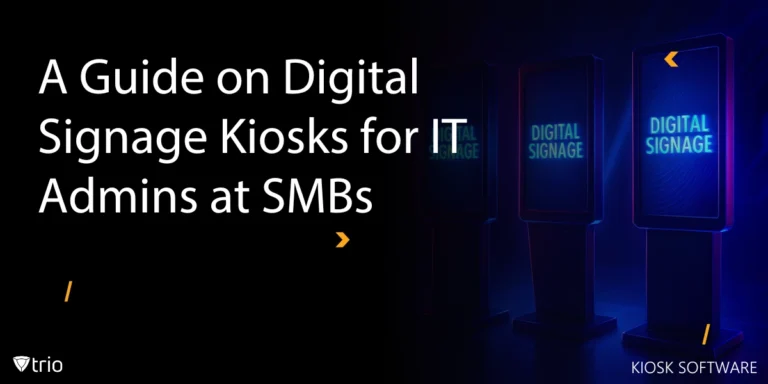In the realm of small businesses, the spotlight often shines on the process of onboarding—welcoming new hires into the team. However, an equally important process that deserves attention is offboarding, the systematic management of an employee's exit. According to ZIPPIA, “71% of organizations have no formal offboarding process.” As businesses strive for efficiency and professionalism, a well-structured employee offboarding checklist is crucial. This article explores the importance of offboarding and offers a practical checklist tailored for small businesses to ensure smooth transitions for departing employees while safeguarding the organization's interests and maintaining positive relationships.
What Is Offboarding?
Onboarding is the process of integrating a new employee into the organization. It begins once a candidate accepts a job offer and continues for the first few months of their employment. The primary objective of onboarding is to familiarize new hires with the company's culture, policies, procedures, and their roles and responsibilities. This process typically involves orientation sessions, introductions to team members, training, provision of necessary resources and tools, and setting expectations for performance and behavior.
Offboarding is the process of managing an employee's departure from the organization. It starts when an employee resigns, retires, or is terminated and continues until their last day of employment. The main goal of offboarding is to ensure a smooth transition for both the departing employee and the organization.
This process includes activities such as conducting exit interviews, collecting company property, deactivating access to systems and facilities, transferring knowledge and responsibilities, processing final payments and benefits, and maintaining legal compliance. Offboarding also involves maintaining positive relationships with departing employees and potentially leveraging their expertise for future opportunities or referrals.
Offboarding should not be confused with the onboarding process, which means integrating new employees into the organization. Onboarding and offboarding are two sides of the same coin. An effective HR department has a proven and tested checklist for new hire onboarding as well as a separate checklist for employee offboarding.

Why Is Offboarding Important?
Offboarding an employee properly is important for several reasons:
-
Maintaining Professionalism
Offboarding ensures that the departure of an employee is handled professionally and respectfully, regardless of the circumstances. It reflects positively on the company's reputation and values.
-
Knowledge Transfer
It allows for the smooth transfer of knowledge, responsibilities, and ongoing projects from the departing employee to their successor or other team members. This minimizes disruptions to workflow and ensures continuity in operations.
-
Protecting Company Assets
Offboarding procedures ensure that all company-owned property, including physical assets like laptops and access cards, as well as intellectual property and confidential information, are returned or properly secured. This helps safeguard the company's assets and sensitive information.
-
Compliance and Legal Obligations
Offboarding ensures compliance with legal requirements, including labor laws, contractual agreements, and data protection regulations. It helps mitigate risks associated with wrongful termination claims or breaches of confidentiality.
-
Maintaining Security
By deactivating access to company systems and facilities, offboarding helps prevent unauthorized access to sensitive data or proprietary information. It also protects against potential security threats posed by former employees.
-
Employee Feedback and Improvement
Exit interviews and feedback collected during offboarding provide valuable insights into employee satisfaction, organizational culture, and areas for improvement. This feedback can inform HR policies, recruitment strategies, and employee retention efforts.
-
Maintaining Positive Relationships
A well-managed offboarding process can help maintain positive relationships with departing employees, fostering goodwill and potentially leading to future referrals or rehiring opportunities.
-
Employee Morale and Retention
How employees perceive the departure of their colleagues can impact morale and retention. A respectful and supportive offboarding process demonstrates that the company values its employees and cares about their well-being, which can enhance morale and loyalty among the remaining staff.

IT Employee Offboarding Checklist
Here’s an employee offboarding checklist that IT departments can use to maintain a professional posture while offboarding an employee. It can also be seen as a list of employee offboarding best practices.
-
Access Revocation
Access revocation involves disabling user accounts and permissions for all IT systems and physical access points. This includes terminating access to email accounts, network resources, software platforms, databases, and any other systems the departing employee had access to. Additionally, physical access to premises should be revoked by deactivating key cards, entry codes, or any other means of entry. This step is crucial for maintaining security and preventing unauthorized access to company resources.
-
Data Backup and Transfer
Data backup and transfer ensure that all important files, documents, and emails associated with the departing employee are safely preserved and accessible to relevant parties. Backing up data helps ensure business continuity and compliance with data retention policies. It's essential to transfer ownership of shared documents, folders, and repositories to team members or successors to ensure seamless collaboration and access to critical information.
-
Device Retrieval
Retrieving company-provided IT equipment ensures the return of all hardware and accessories assigned to the departing employee. This includes laptops, desktops, mobile devices, external drives, monitors, keyboards, and docking stations. Collecting these devices helps prevent data breaches, ensures the security of company information, and facilitates the redistribution of equipment to other employees or for future use.
-
Software and License Management
Managing software and licenses involves uninstalling company-licensed software and applications from the departing employee's devices. It also includes reclaiming software licenses and subscriptions associated with the departing employee's accounts to optimize license usage and reduce costs. Proper management of software licenses ensures compliance with licensing agreements and prevents unauthorized software usage.
-
Security Measures
Implementing security measures involves changing passwords and access codes associated with the departing employee's accounts to prevent unauthorized access. This includes resetting passwords for email accounts, network logins, software platforms, and any other systems the employee had access to. Conducting a security audit helps identify and address any potential vulnerabilities or security risks associated with the departure of the employee.
-
Asset Inventory
Updating the IT asset inventory ensures accurate documentation of all IT assets associated with the departing employee. This includes recording serial numbers, models, conditions, and locations of returned equipment. Maintaining an up-to-date asset inventory facilitates effective asset management, tracking, and allocation within the organization.
-
Communication and Collaboration Tools
Managing communication and collaboration tools involves removing the departing employee from all relevant platforms and transferring ownership of documents, projects, and tasks to appropriate team members or successors. This ensures seamless communication and collaboration within the team and prevents disruption to ongoing projects or tasks.
-
Email Management
Managing email accounts includes redirecting the departing employee's emails to a designated inbox or forwarding them to relevant team members for monitoring. Updating auto-reply messages informs senders of the employee's departure and provides alternative contacts if necessary. Proper email management ensures continuity of communication and prevents the loss of important correspondence.
Conclusion
In conclusion, while often overshadowed by its counterpart, onboarding, offboarding is an indispensable aspect of managing human resources effectively, particularly for small businesses. A meticulous offboarding process not only ensures legal compliance and protects company assets but also upholds professionalism, maintains positive relationships, and contributes to the overall morale and retention of the remaining staff. By following the employee offboarding template provided above, small businesses can navigate the departure of employees with grace and efficiency, setting the stage for continued success and growth.
Don't let offboarding become a headache. Consider leveraging Trio, our robust MDM (Mobile Device Management) solution to automate offboarding. With Trio, you can remotely wipe devices, manage apps, enforce security policies, track devices, and automate workflows—all in one platform. Try Trio’s free demo today and ensure a smooth transition for departing employees while protecting your company’s data and assets.
Get Ahead of the Curve
Every organization today needs a solution to automate time-consuming tasks and strengthen security.
Without the right tools, manual processes drain resources and leave gaps in protection. Trio MDM is designed to solve this problem, automating key tasks, boosting security, and ensuring compliance with ease.
Don't let inefficiencies hold you back. Learn how Trio MDM can revolutionize your IT operations or request a free trial today!





